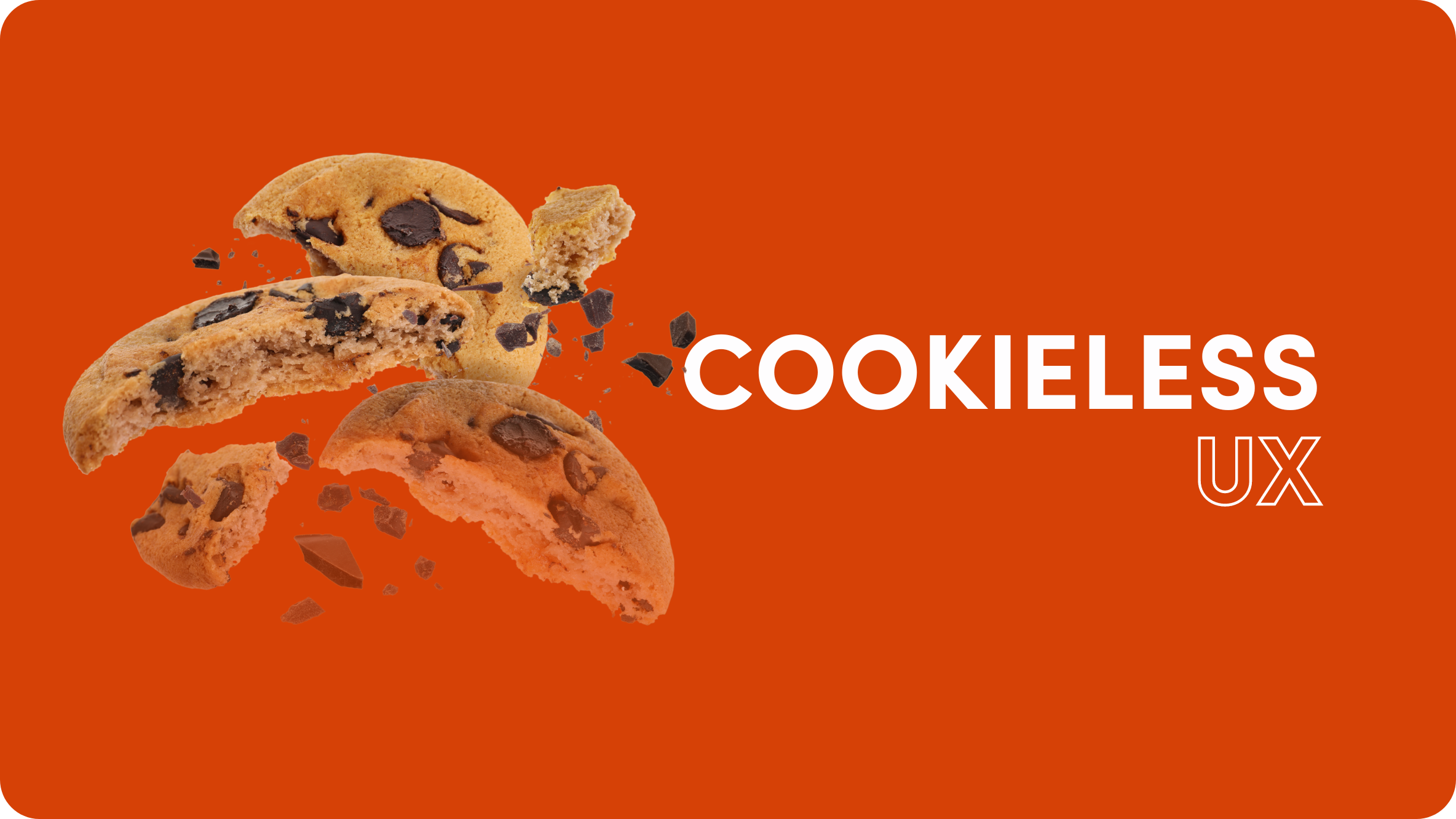No-Nonsense Guide to Paid Marketing for Dropshipping Success

Success in dropshipping is all about one thing – customers.
Even if you’ve found a great product that’s in demand, you’re not going to make any money if you can’t catch people’s attention and draw them in.
But it’s not easy to work out how to do marketing for dropshipping on your own.
To save you scratching your head in confusion, we’ve put together this in-depth paid marketing guide for dropshipping. Read on for deep insights into the art of dropshipping and how paid marketing can accelerate your success.
What Is Dropshipping?
Dropshipping is a retail model where you, the seller, don’t keep the products you sell in stock.
Instead, when someone buys from your online store, you purchase the item from a third-party supplier and they ship it directly to the customer. You never touch the product – you’re basically the middleman between the supplier and the customer.
Let’s look at an example. Imagine you run a dropshipping business that sells smart home gadgets. When a customer places an order for a smart plug on your website, you place the same order with your supplier and they send it directly to the customer’s doorstep.
Your profit comes from the difference between what you charge the customer and what you pay to the supplier. It’s as simple as that. You’re in charge of the marketing, sales, and customer support – a supplier does the rest.
Although dropshipping is a low-risk, low-overhead way to get into retail, there are some challenges that we’ll explore later in this guide. Overall, the key to success is choosing the right products, finding reliable suppliers, and keeping your customers happy.
How Does Dropshipping Work?
If you’re thinking of setting up a dropshipping business, there are several key steps you need to take first.
1. Finding your niche
The first thing to do is figure out what you want to sell. This is super important. It’s a bad move to try selling too wide a variety of merchandise or even just two different categories of products, e.g. electronics and fashion. If you do, keeping track of your marketing efforts and targeting a specific audience will be difficult.
It makes much more sense to niche down to just one type of merchandise, even if it’s only one or two products, to begin with. This makes everything easier, from marketing to customer service.
2. Picking a supplier
Once you’ve chosen your niche, you’ll need a supplier. Two popular choices are AliExpress and Oberlo, but there are many out there. You want a supplier that’s reliable, offers quality products, and ships in a reasonable time.
Do your homework. The last thing you want is a supplier who is always late with shipments. You’ll end up dealing with angry customers. Not fun.
3. Setting up an online store
You’ll need a platform to sell on. Shopify is very user-friendly, even if you’re not a tech whiz. It’s the platform that most dropshippers start out with. WooCommerce is another good option if you’re familiar with WordPress. It’s important to make your website look professional right from the get-go – it’s your storefront, after all.
4. Listing products
Once your store is ready, it’s time to list products. You don’t buy the products upfront. Some other strategies, such as Fulfilled by Amazon, make you buy stock upfront and charge storage costs, which isn’t technically dropshipping, although it’s sometimes mistakenly put into the same bracket.
Instead, you list the products from your supplier’s catalog on your website. You add your own pricing, write unique product descriptions, and make it yours. You need to come up with clever ways to market your products. If you sell smart locks and security cameras, for instance, you can bundle them together as “Home Security Packages” for a better deal.
5. Marketing and sales
No one is going to visit your store if they don’t know it exists, right? So it’s time to hustle. Use SEO, social media ads, and email marketing to attract visitors. Take the time to get your targeting right, otherwise, you may waste money on tactics like Facebook ads. Draw up a target customer avatar or profile and make sure that all your messaging is carefully directed.
6. Taking orders
When a customer buys something from your store, you purchase it from your supplier. Some platforms automate the process. In a Shopify store, for example, you can integrate Oberlo for instant ordering. The supplier then ships the product directly to the customer. You never touch the merchandise and keep overheads low, which is the beauty of dropshipping.
7. After-sales support
As discussed earlier, there’s just one more thing that you’re responsible for and that is customer service. The type of support you need to provide includes returns, refunds, and any other queries or issues the customer may have post-purchase.
Why Dropshipping Entrepreneurs Should Focus On Paid Marketing
If you’re trying to break into dropshipping, paid marketing is a must. If you rely solely on organic traffic, it’s like trying to get an airplane to take off with basic gasoline. It’s going to be slow to get off the ground. Paid marketing accelerates your take-off. Here’s why:
Instant traffic
Organic SEO is wonderful, but let’s be real, it takes time. Do you really want to wait months for Google to rank you? Paid marketing is like flipping a switch – you get immediate traffic, as long as your messaging and creatives hit the right notes.
Pay-per-click or PPC for dropshipping can really boost your results. PPC search ads appear at the top of search results, above organic listings. This means you’re essentially cutting in line, getting right in front of your potential customers before they even see the other options.
Highly targeted
Let’s say you’re selling fitness gear. You can use paid ads to target people on social media and native networks who are interested in CrossFit or home workouts. The level of targeting you can do with paid ads is insane. You want to sell to 30-year-old vegan moms who like yoga? No problem! Or how about sports-crazy, paleo-diet eating, 20-something single men who are into kettlebells? Done! With lookalike audiences, you can target similar consumers who are likely to be interested in your offer, expanding your reach even more.
PPC for dropshipping can also be highly targeted based on keywords, location, time of day, device type, and audience demographics. There are also retargeting options available (more on that in a moment).
Brand building
This is the part where many dropshippers fall down. They pay for a few basic paid ads and sit back waiting for conversions. The sales don’t materialize so they give up. What they fail to realize is that paid ads aren’t just for immediate sales. They’re also for brand building.
The more people see your brand, the more they start to trust it. And trust converts to sales over time.
Scalability
Here’s where the real magic happens. Once you find a winning product and a winning ad, scaling is as simple as increasing your ad budget. Finding that $20 a day on ads is giving you a decent ROI? Crank that budget up to $50, $100, or $500 daily, and watch your revenue multiply. Organic traffic doesn’t give you that level of control.
A word of caution – scaling isn’t just about blindly upping your budget. Keep an eye on key metrics like your cost per acquisition (CPA) and lifetime customer value (LCV) to ensure you’re scaling profitably. Your ad performance can sometimes decrease if you scale too quickly, so stay alert. It’s a balancing act, but when done right, it’s a revenue builder.
Retargeting
Not everyone buys the first time they see your product. In fact, most won’t. That’s where retargeting comes in. You can use paid ads to subtly remind people on other sites and platforms they visit, “Hey, you sure you don’t want this awesome thing?”. If you get your retargeting set up properly, just sit back and watch your conversions go through the roof.
Analytical insights
Paid platforms usually offer a wide array of analytics. And there’s nothing more important in the dropshipping game than knowing your numbers. With paid ads, you can easily tell which products are winners and which are duds.
Don’t forget – paid marketing costs money. And there’s a learning curve. Most successful dropshippers can tell stories of losing some money on campaigns that flopped. But that’s just part of the process. Once you nail it, the returns can make up for any initial losses.
If you’re serious about your dropshipping business, it’s highly recommended to allocate a decent budget for paid marketing. It’s like an investment. As they say, “You gotta spend money to make money”.
Popular Paid Marketing Channels For Dropshipping Businesses
Marketing is the lifeblood of any dropshipping business. No matter how good your products are, if people don’t know about them, you won’t get many sales. Let’s break down some of the key marketing channels you can tap into to drive that much-needed traffic and sales.
Social media
- Facebook Ads & Instagram: Facebook is the daddy of all paid marketing social media platforms. Instagram is its close sibling. The reason these two lead the pack is that it’s really easy to create super-targeted ads for different demographics. You can run ads in various formats too – images, videos, stories, and so on. You can even target or retarget people based on their behavior, if they visited a certain page on your site, for example. The platforms also give you the option to run A/B split tests and provide highly detailed analytics.
- TikTok: TikTok is where you can capture the younger audience. TikTok ads are generally more engaging and less “salesy.” They’re more about building brand culture than pushing a product, so go easy on the sales patter.
- Pinterest: Pinterest is the go-to platform to market practical solutions. If you’re selling home decor, fashion, or even tech gadgets, Pinterest is a safe bet.
Google Ads
- Display ads: These are the visual ads you see on websites that are a part of Google’s Display Network. Great for building brand visibility.
- Search ads: Text-based ads that you see on Google search results. Highly effective if you target the right keywords. It’s like fishing – you’ve got to use the right bait.
- YouTube: Video is a highly effective way to engage your audience. Running ads here can be more expensive, but the engagement you get is often well worth it.
Native networks
Native ads blend in with content that’s already on the platform. Outbrain specializes in this, making your ads look like recommended articles on major media sites. It’s less intrusive, so the click-through rates can be very good.
The beauty of native advertising is that you can advertise your dropshipping offers on the open web – that is, on websites outside of the closed ecosystems of social media networks. Native advertising platforms partner with many of the world’s leading news, entertainment, and other content-rich websites, so you can target audiences while they are browsing their favorite websites and topics, and tempt them with relevant ads and content when they are already curious and open to discovery.
Retargeting ads
You can run retargeting campaigns on platforms like Facebook, Outbrain, and Google. It’s a “Hey, remember me?” strategy. You target people who’ve visited your site but didn’t convert. This means they have already shown some interest in and interacted with your site, but they haven’t yet been convinced to buy. By ‘retargeting’ them with ads for your products or offers, you can remind them about their previous interest, and nudge them back to complete their purchase.
Influencer marketing
Influencers already have an engaged audience that trusts them and interacts with them frequently. So, when an influencer endorses your product, this carries weight. Just make sure the influencer aligns with your brand and niche. You wouldn’t ask a vegan influencer to promote leather goods, right?
Affiliate marketing
Partnering with affiliates or joining an affiliate network is like having a bunch of little helpers selling your product. They promote your goods, and in return, they get a commission on sales. It’s a win-win, but make sure to keep track of their performance.
Remember, each of these channels has its own nuances and strategies, so make sure to do your homework. It may be wise to consider getting specialized help in each area. If you get the right people for the job, you’re more likely to see your dropshipping business head in the right direction.
How To Optimize Paid Marketing Campaigns To Improve ROI In Dropshipping
In dropshipping, it’s really important to optimize your paid campaigns for better ROI. After all, your margins can be thin, and you’re not going to make much money if you’re spending it all on ads that don’t convert.
Here are some top tips on how to optimize your paid ads and maximize ROI.
1. A/B testing
Always, always, always run A/B tests on your ads! This could be as simple as changing the headline, image, or even a single word in the call to action. Collect data and adjust your ads to suit the results. You’ll be amazed at how small tweaks can lead to significant improvements.
2. Tighten up your targeting
Don’t go for the “spray and pray” method. Target specific demographics, behaviors, or interests that align with your product. For example, if you’re selling high-end coffee machines, target people interested in specialty coffee shops, not just anyone who “likes” coffee.
3. Retargeting
Someone visited your site but didn’t make a purchase? Retarget them with a specific ad. Maybe offer a small discount or highlight a feature they might have missed. Retargeting campaigns usually have a higher conversion rate because the audience is already familiar with your product.
4. Optimize landing pages
Your ad may be a masterpiece, but if it leads to a crummy landing page, you’re going to lose out on a sale. The landing page should be an extension of your ad, smoothly leading the visitor towards conversion. Optimizing your landing pages is a good strategy to increase conversion rates and generate more ROI.
5. Adjust your bids
Some keywords or times of day may perform better for you. Be prepared to adjust your bids to capitalize on factors that show high performance. This can help you get more value from your ad spend.
6. Keep an eye on the right metrics
Clicks and impressions are fine, but what you really want to watch are conversion rates and cost per conversion. These metrics directly correlate with ROI. The goal is to maximize conversion rates and minimize cost per conversion.
7. Seasonal campaigns
Align some of your campaigns with seasons, holidays, or events that make sense for your product. Events like Black Friday and Cyber Monday can bring in a burst of sales, but make sure to adjust back once the season is over.
8. Pay attention to Customer Lifetime Value (CLV)
When considering ROI, factor in the potential lifetime value of a customer, not just the one-time spend. If a customer is likely to make repeat purchases, you can afford to spend a bit more on ads or retargeting to acquire them initially.
9. Keep the funnel in mind
Different stages of the customer journey require different types of engagement. Tailor your ads to suit. For example, informational content is good for engaging people at the top of the funnel while more direct calls to action work for those at the bottom.
10. Consistency is key
Make sure your messaging is consistent across platforms. A disjointed brand message can confuse potential customers and lower your conversion rates. Develop and implement an omnichannel marketing strategy for the best results.
3 Common Mistakes To Avoid In Dropshipping Paid Marketing
There are many dropshipping pitfalls, but three main ones can end up giving you headaches if you’re not careful to avoid them.
1. The “Set It and Forget It” mentality
So you’ve got your campaign set up, the ad looks crisp, and the clicks are starting to roll in. You decide to kick back and let the magic happen, right? Wrong!
Dropshipping isn’t a slow-cooker recipe. You need to constantly tweak the ingredients. A campaign that worked great last week might suddenly start failing due to increased competition, ad fatigue, or shifts in customer behavior.
You’ve got to be on top of your metrics every day. If you’re not optimizing daily, it’s like throwing money into the wind and hoping it flies back into your pocket.
2. Ignoring your landing page
Imagine you’ve got a killer ad. Clicks are through the roof. But sales? Nada. Why? Because the landing page is terrible. The design and copy don’t align with your niche.
Your landing page needs to be an extension of your ad, guiding the visitor seamlessly to the finish line. Poorly designed landing pages or storefronts with unclear calls to action, slow load times, or complex checkout processes can tank your conversion rates faster than you can say “dropshipping.”
3. Spreading yourself too thin
It’s tempting to try and be everywhere – Facebook, Instagram, Google, TikTok, X, etc. But here’s the deal – not every platform is right for every product or audience.
You’re better off doing one or two things really well, rather than five things poorly. Stretching yourself too thinly dilutes your focus, making your campaigns less effective. Try to master one channel at a time. Once you’ve got that dialed in, then you can think about expanding.











